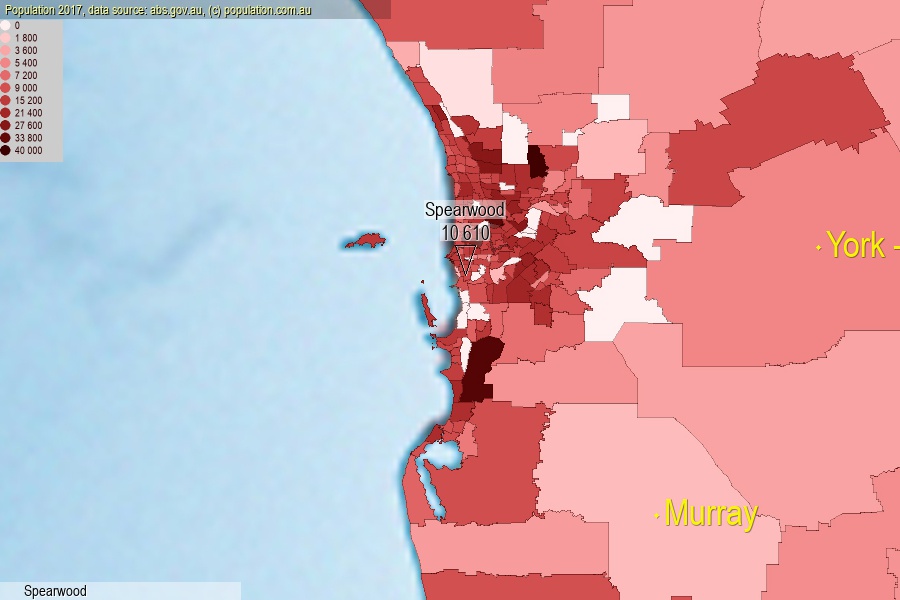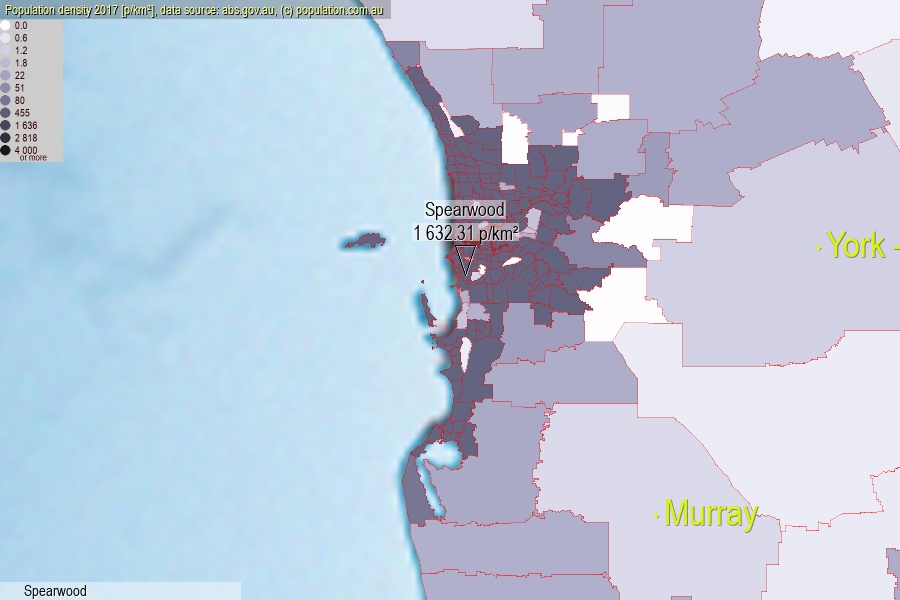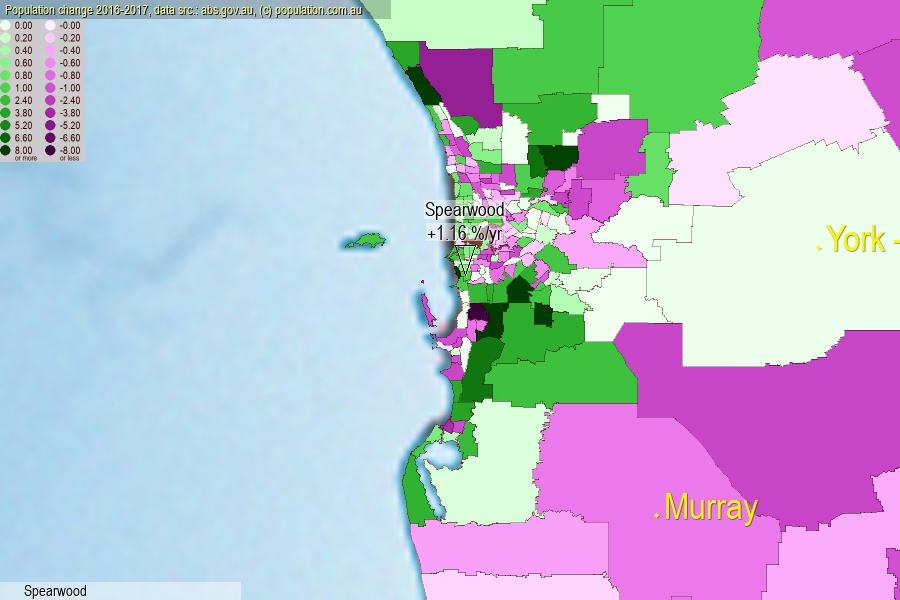 population.com.au
population.com.auLast official estimated population of Spearwood (as Statistical Area Level 2) was 10 610 people (on 2017-06-30)[2]. This was 0.04% of total Australian population and 0.409% of WA population. Area of Spearwood is 6.50 km², in this year population density was 1 632.31 p/km² . If population growth rate would be same as in period 2016-2017 (+1.16%/yr), Spearwood population in 2025 would be 11 639. [0]



Click to enlarge. Spearwood is located in the center of the images.
Population [people], population density [p./km²] and population change [%/year] [2]
View borders » (new window) [4]
[1991-1992] -0.43 %/Yr.
[1992-1993] -1.84 %/Yr.
[1993-1994] -2.20 %/Yr.
[1994-1995] -1.33 %/Yr.
[1995-1996] +0.38 %/Yr.
[1996-1997] +0.44 %/Yr.
[1997-1998] +0.24 %/Yr.
[1998-1999] +2.07 %/Yr.
[1999-2000] +0.92 %/Yr.
[2000-2001] +0.99 %/Yr.
[2001-2002] -0.33 %/Yr.
[2002-2003] -0.68 %/Yr.
[2003-2004] -1.08 %/Yr.
[2004-2005] -0.14 %/Yr.
[2005-2006] -1.11 %/Yr.
[2006-2007] +0.01 %/Yr.
[2007-2008] +0.89 %/Yr.
[2008-2009] +0.93 %/Yr.
[2009-2010] +0.77 %/Yr.
[2010-2011] +1.84 %/Yr.
[2011-2012] +2.34 %/Yr.
[2012-2013] +1.84 %/Yr.
[2013-2014] +1.28 %/Yr.
[2014-2015] +0.99 %/Yr.
[2015-2016] +0.78 %/Yr.
[2016-2017] +1.16 %/Yr.
[0] Calculated with linear interpolation from officially estimated population
[1] Read more about SA2 and Australian Statistical Geography Standard (ASGS) on abs.gov.au
[2] Population data from Australian Bureau of Statistics (Population and density: 2017; change: 2016-2017)
[3] Digital Boundaries: Australian Statistical Geography Standard (ASGS) 2016.
[4] Border coordinates are simplifyed using Ramer-Douglas-Peucker algorithm.